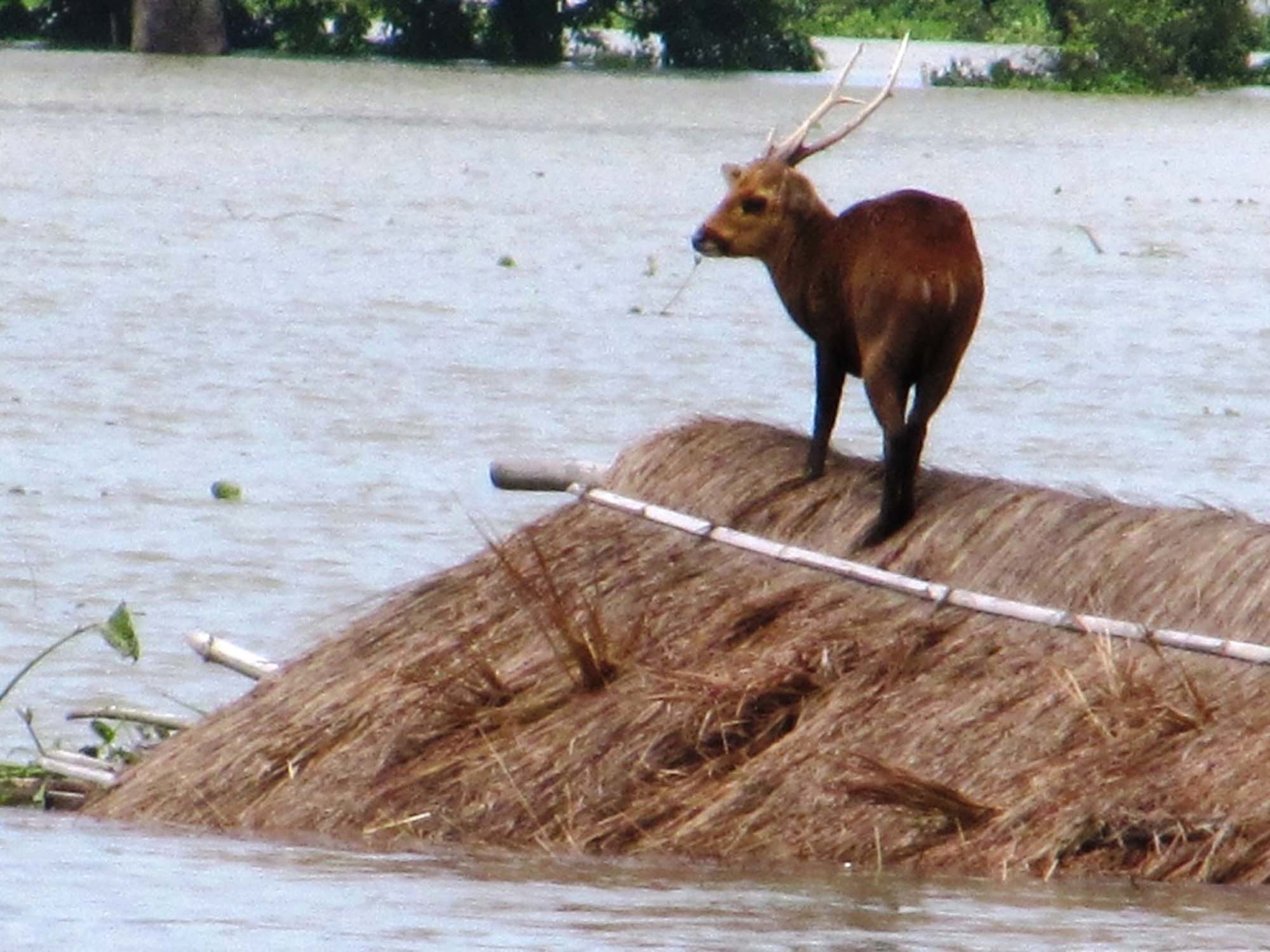The villagers will be trained to handle the animals stranded out of the park and will be given emergency numbers to call. Villagers are also being trained in identifying and handling poisonous snakes.
With flood water affecting the Kaziranga National Park, the authorities have now turned to villagers seeking their help in rescuing animals affected by the floods.
The authorities have come up with a pre-flood awareness campaign for the safety of wildlife in the fringe villages of this World Natural Heritage Site.
The campaign launched on Wednesday talked about how to handle and rescue animals in case they were found stranded outside the park during the floods.
Park officials, along with wildlife conservation NGOs and local organizations, came together for the campaign and sensitized people about helping out animals in distress.
They also organized an orientation programme at the Centre for Wildlife Rehabilitation and Conservation (CWRC) for villagers to identify the snakes which are poisonous and tips on handling them.
In 2012, Kaziranga faced severe floods where hundreds of animals including Rhinos, wild buffaloes and hog deer had drowned. To avoid catastrophes like that in the future, the authorities are ensuring that the villagers are well prepared to handle such situations.
They have also shared their telephone numbers with the villagers so that they can directly get in touch with them in case they spot animals in distress.
Two contact numbers of Kaziranga Control Room (03776-268007) and CWRC (03776-269563) would be operational all the time.
While panic and inappropriate handling might harm both animals and villagers, preparedness and cooperation from villagers can help in dealing with the situation in a better way.
The park has not yet been touched by the recent floods, but the authorities are taking steps to minimize the adverse effect created by floods on the natural heritage site.
All photos: dhruvplanet.com
Like this story? Or have something to share? Write to us: contact@thebetterindia.com, or connect with us on Facebook and Twitter (@thebetterindia).
If you found our stories insightful, informative, or even just enjoyable, we invite you to consider making a voluntary payment to support the work we do at The Better India. Your contribution helps us continue producing quality content that educates, inspires, and drives positive change.
Choose one of the payment options below for your contribution-
By paying for the stories you value, you directly contribute to sustaining our efforts focused on making a difference in the world. Together, let's ensure that impactful stories continue to be told and shared, enriching lives and communities alike.
Thank you for your support. Here are some frequently asked questions you might find helpful to know why you are contributing?


